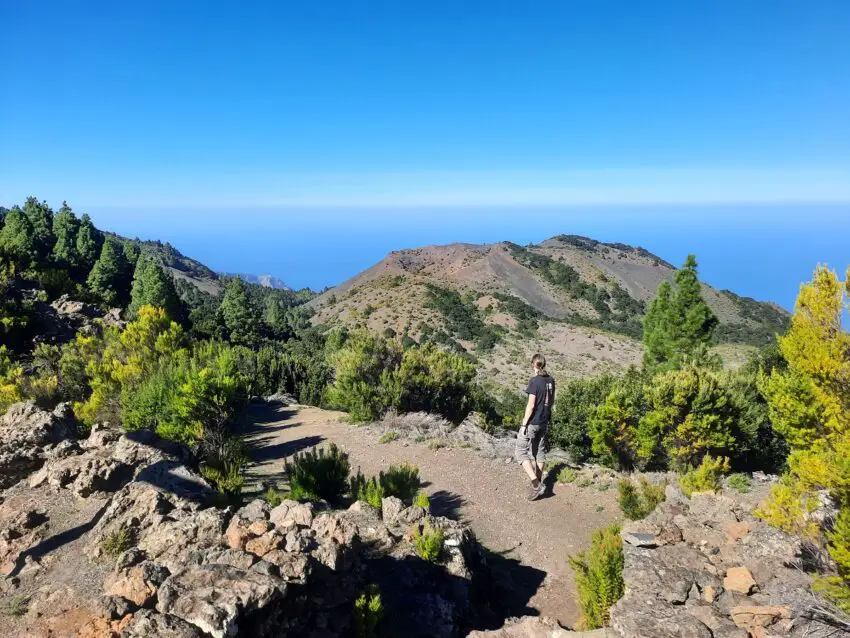The wonderful transinsular Camino de la Virgen arguably is El Hierro’s most spectacular hike. At 28km or 17mi., it’s certainly the longest hike the island has to offer and traverses a series of diverse landscapes from green pastures to pine forest to bare volcanic mountain tops to humid laurel forests.
The camino also plays a major part in the most important festival on the island: Every four years the statue of the Virgin Mary is carried along this trail from its home in the Ermita de la Virgen to the Iglesia de la Concepción in Valverde during the Bajada de la Virgen Procession.
At any other time, you’ll likely have the trail to yourself for most of the time, so you’ll be able to enjoy the wonderful landscape in solitude. It’s a fun hike and one that offers many fantastic views of the northern and southern coasts of the island. Read on for everything you need to know about walking the Camino de la Virgen.
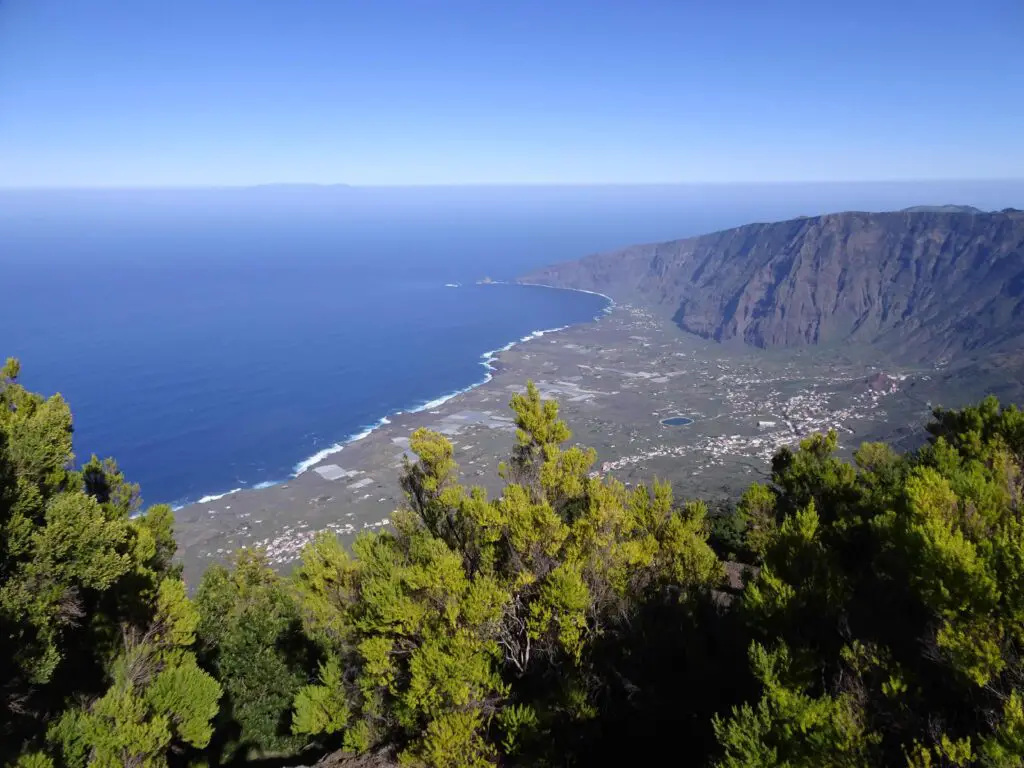
This post may contain affiliate links, and I might earn a small commission at no additional cost to you. For more info, click here.
How to get to the trailhead?
The hike starts at the Ermita de la Virgen Sanctuary in the uninhabited western part of the island. You won’t find any public transport to the start and as it’s not a loop trail, driving there by rental car won’t do either.
That leaves you with the option to take a taxi to the trailhead. A trip from Valverde should cost about 50€, but you can cut your costs significantly by taking the bus to El Pinar (You can check the connections on this website) and hiring a taxi from there. That way, Stefanie and I paid about 25€ for the one-way trip to the start of the Camino. Make sure to reserve your taxi at least the day before.
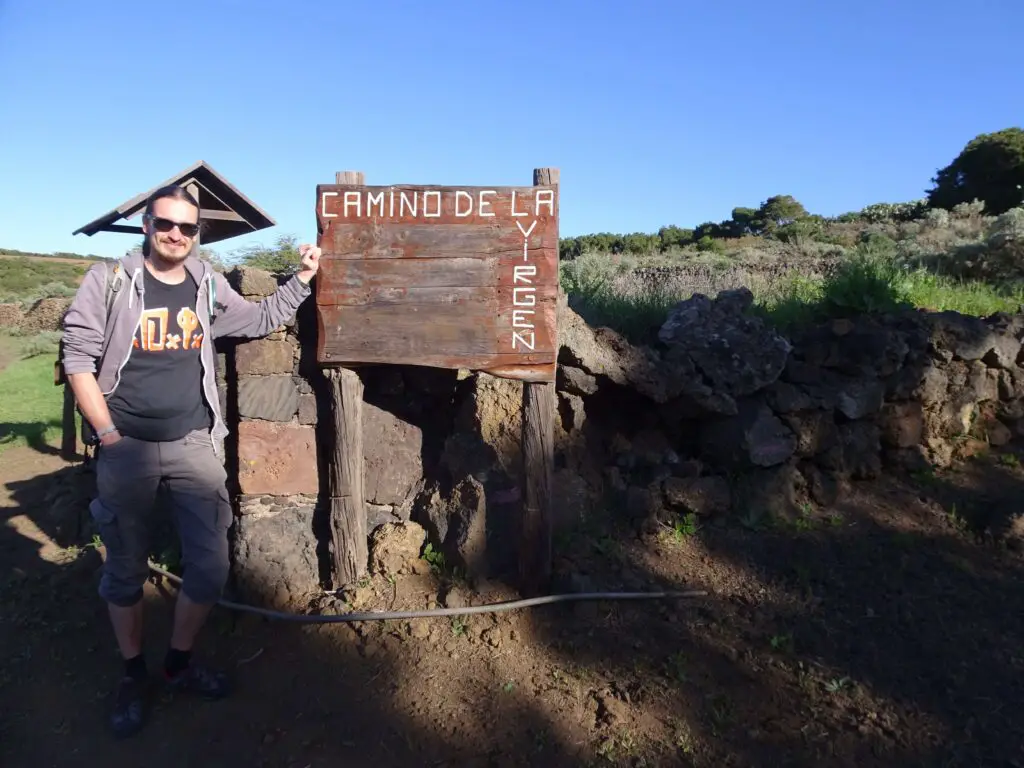
The hike ends in Valverde, so getting away is much easier than getting to the trailhead.
How long does the hike take?
Due to the distance involved, hiking the Camino de la Virgen is a whole-day affair. Depending on your level of fitness and how often you take breaks, I suggest planning between 7 and 10 hours for the entire hike. Stefanie and I, who are reasonably fit but not super used to long-distance hikes, spent a little over 8 hours to finish.
What to bring?
The first two thirds of the hike run through completely uninhabited territory, so you need to make sure to bring enough water (at least two 1.5l bottles per person). We did pass a couple of springs on the way, but all of them had no drinking signs attached. A sugary drink for that energy boost is also a good idea.
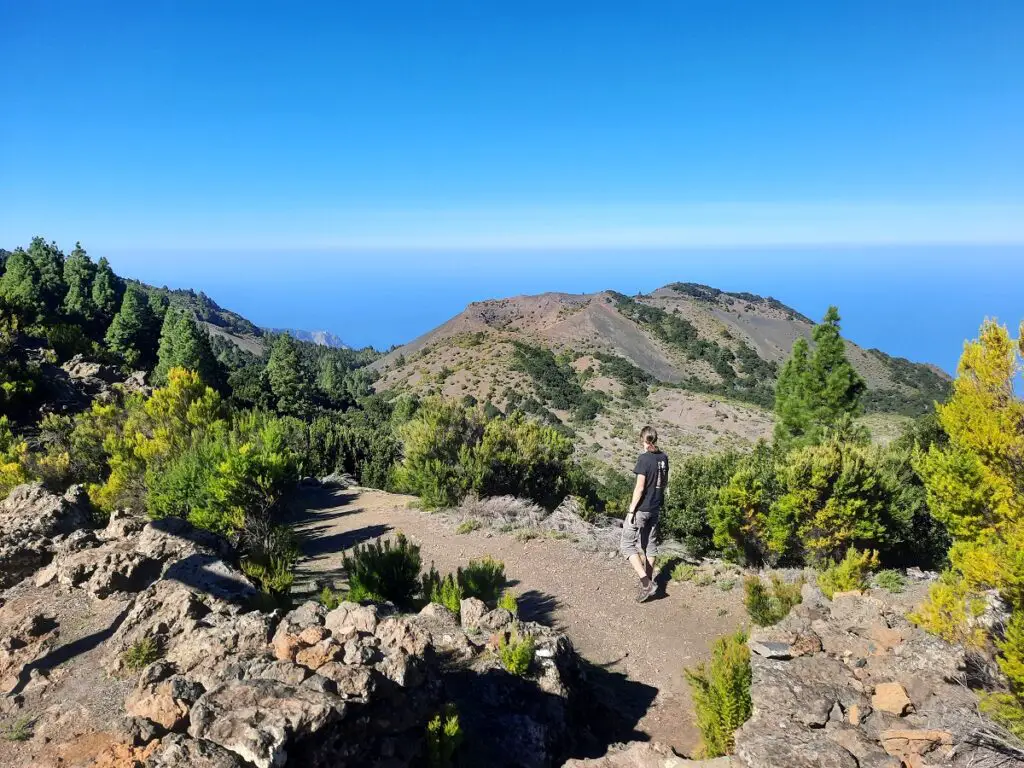
You’ll also need enough food for about 5 to 6 hours at least, as the first possible place to stock up on snacks and drinks would be San Andrés, which you’ll pass after about 20 km or 12 mi. (going there would require a small detour).
Also, make sure to bring a jacket, even if it’s warm and sunny when you’re starting. The trail traverses the higher reaches of the island, and it can get quite windy up there.
Description of the hike
Ermita de la Virgen to La Gorona Viewpoint
The trail starts at the Ermita de la Virgen Sanctuary, a pretty whitewashed, walled church compound that is home to the titular statue of the Virgin Mary, which is being carried over the island during the Bajada de la Virgen Festival. The church only opens at 10am, though, so if you want to get an early start, you might want to check it out on a different day or content yourself with having a look from the outside.
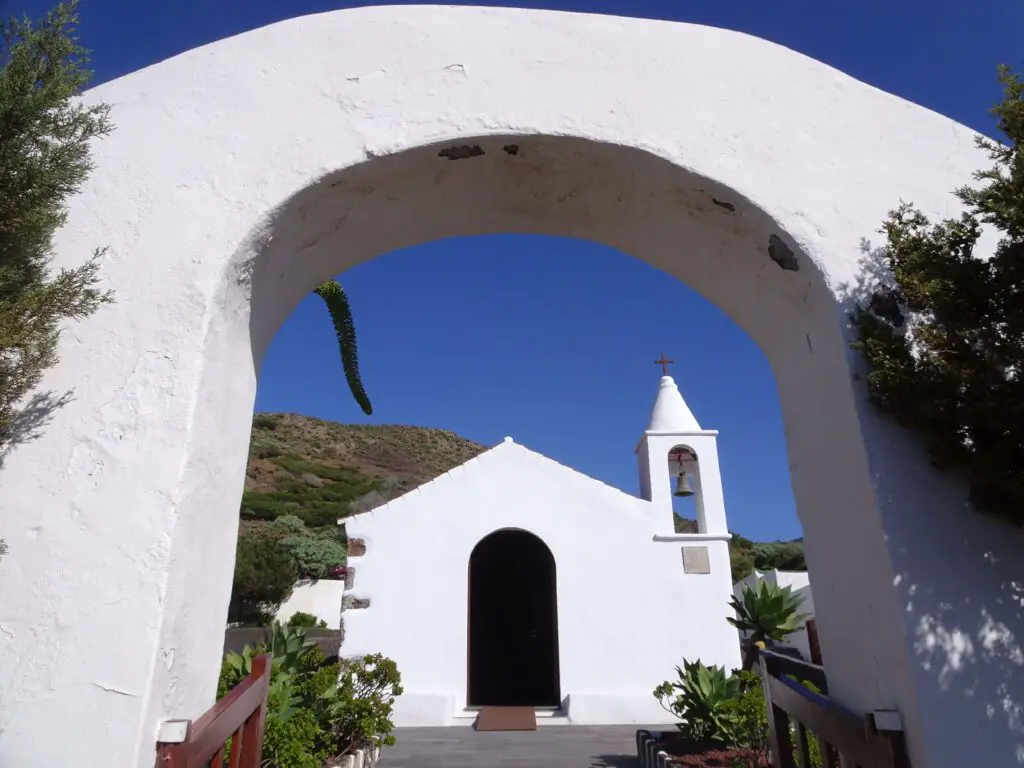
After walking north for a few minutes, the trail passes the Piedra de los Regidores, a big stone slap on top of which the statue is traditionally placed at the beginning of the Bajada Procession. The start of the trail is also its steepest part, as it slowly climbs through a beautiful landscape of green pastures.
Make sure to stop once in a while to admire the views and have a look at the rich birdlife. We spotted plenty of Canaries as well as hawks hunting for prey over the fields. After a while, you’ll reach the La Gorona viewpoint, offering great views over the Golfo Valley on the northern side of the island.
La Gorona Viewpoint to Malpaso
From here on out the trail climbs steadily, but less steeply, mostly following traditional shepherd’s footpaths that used to allow access to the communal herding grounds of La Dehesa. Eventually you’ll pass through a cattle gate and move along the pretty pine-studded slopes of the Tajusara mountain.
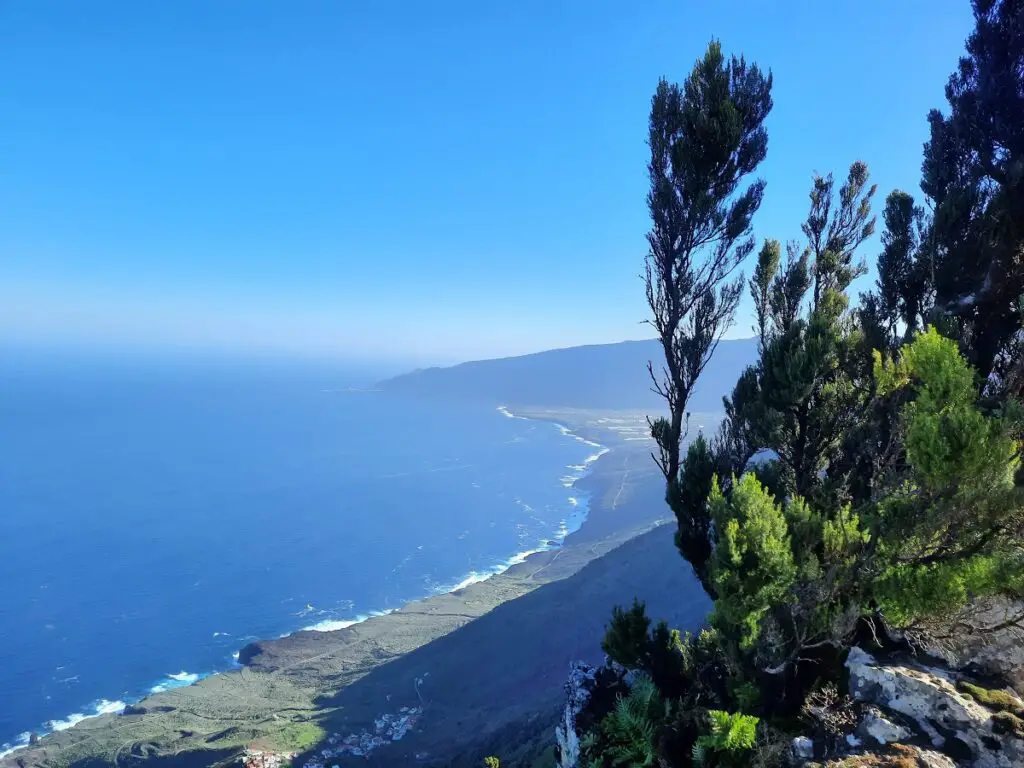
After a while, you’ll spot a small wooden cross on your right. This is the Cruz de los Humiladores, which supposedly was erected by a traveler who fell ill on the way to America and was cured on the island. It’s also said to be the last spot on the trail from which you can see the Ermita de la Virgen, although the pine trees growing around the cross make this quite hard.
After passing through a pretty stretch of forest, you’ll come to the Fuente de Binto, a photogenic spring shaded by a juniper tree (no drinking water, unfortunately). On this section of the trail, sweeping views down the southern slope of the island open up.
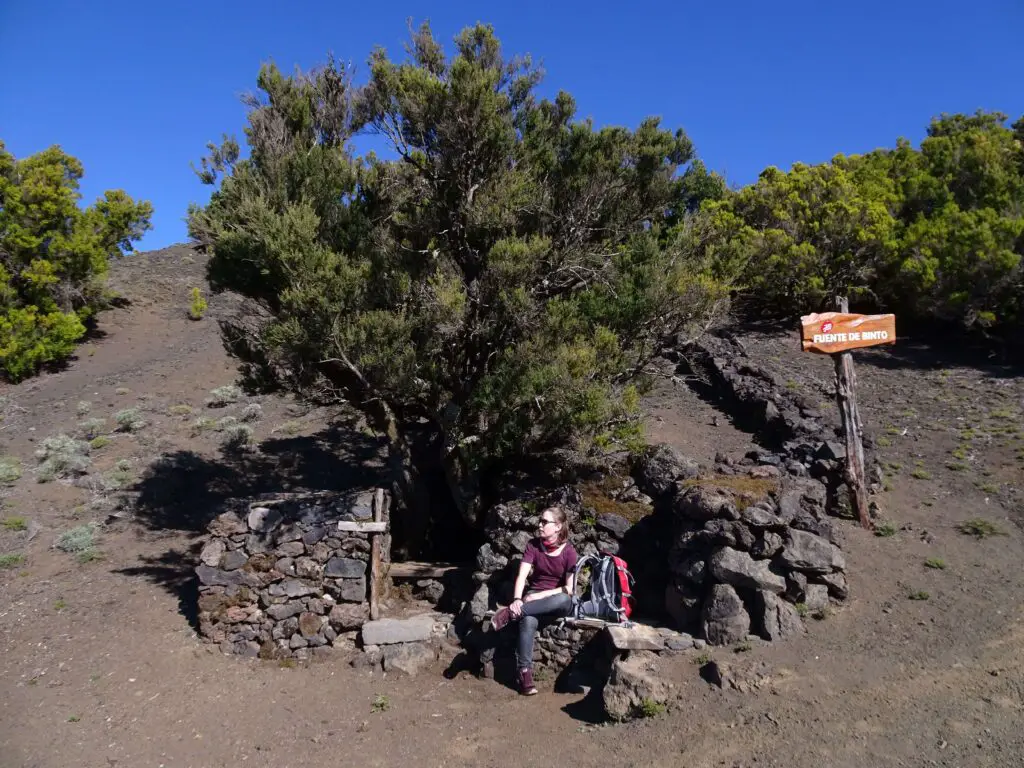
From here, you can also spot the Faro de Ochilla, the lighthouse at the south-western tip of El Hierro, which was considered the end of the world for a long time. For us, the next part of the trail was one of the most attractive sections, moving through a light pine forest with spectacular views of the Tanganasoga mountain to the north of the trail before reaching the bare peak of the Malpaso.
Malpaso to the Hoya de Fireba
At 1,501 m or 4,925 ft., the Malpaso is the highest mountain on El Hierro. There’s a plain marker on the summit and a great viewpoint of the Golfo Valley – especially to the north towards Tigaday, La Frontera and the Mirador de la Peña.
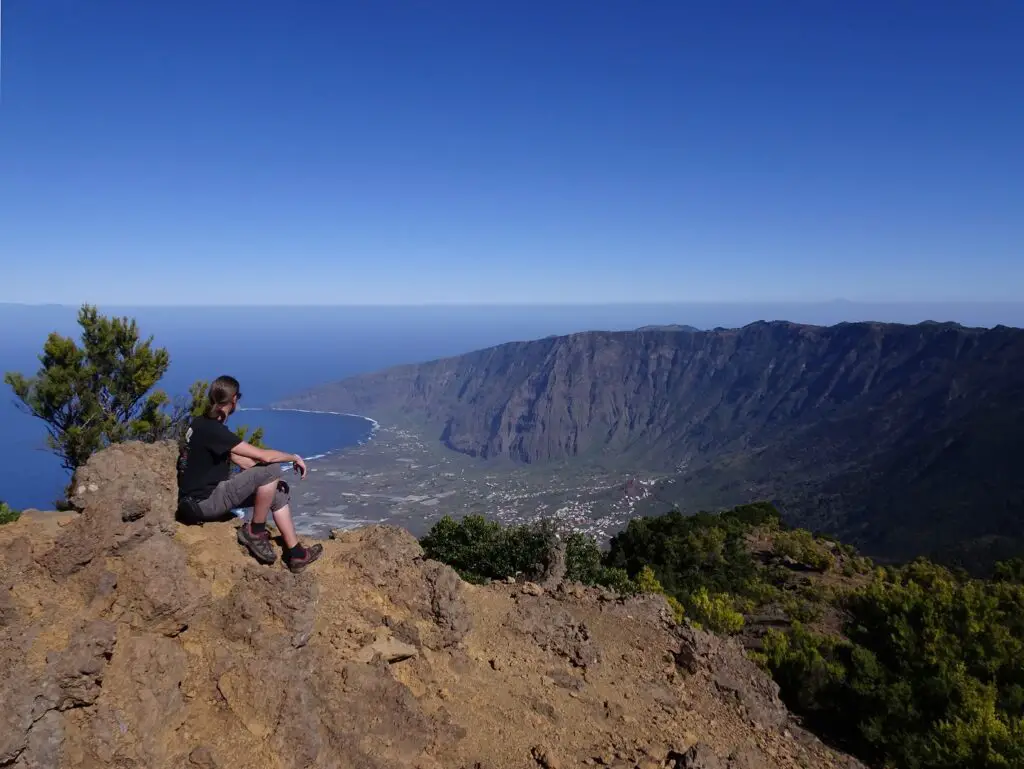
The great views continue on your way down the Mountain. Parts of the trail are quite steep and the ground underfoot can be a bit loose, so take your time and make sure you don’t slip. Apparently there is a reason for the name of the mountain (Malpaso translates to Miss-step).
Finally, you’ll reach the Cruz de los Reyes, another wooden cross but one that is significantly bigger than the Cruz de los Humiladores. If you’re still fit and ‘on schedule’, you could take a small detour (about 10 mins.) to the south to visit the Fuente Cruz de los Reyes, a natural spring in a super atmospheric grove of Fire trees.
The actual trail continues east past the Cruz de los Reyes. Make sure to look back west to spot the Arado del socialismo, a monument erected in commemoration of the first free elections after the death of Spanish dictator Francisco Franco in 1975. After a while, you’ll pass the Tenerista Mountain on its southern slope before joining with the asphalt road running through the center of the island.
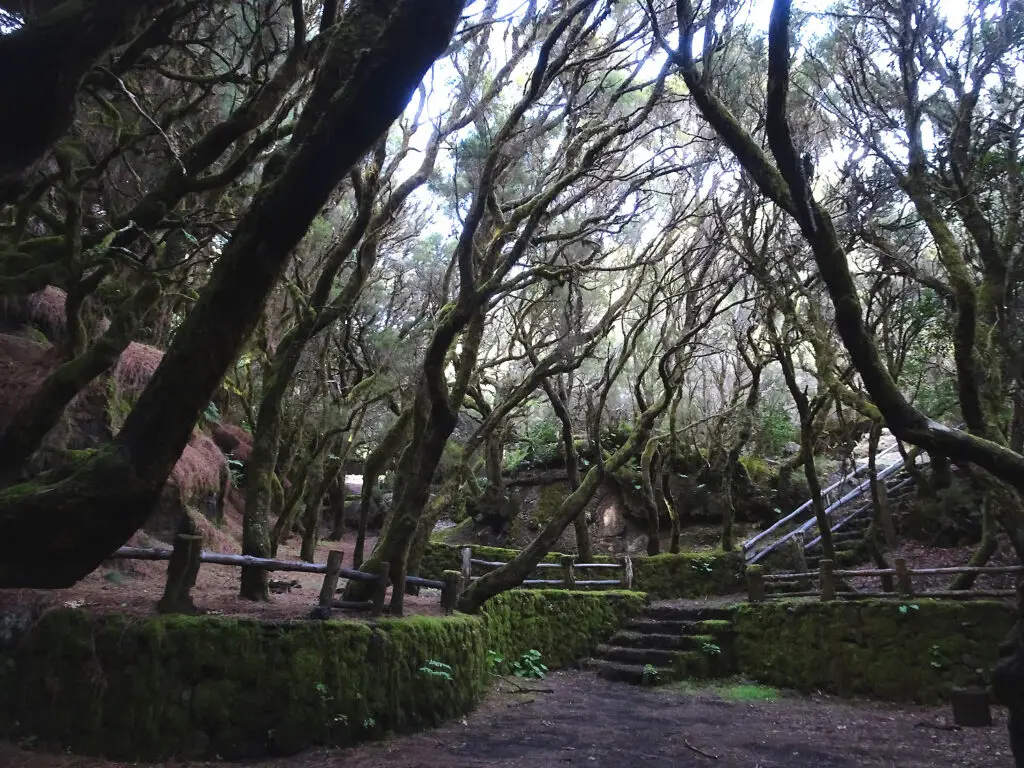
There’s a nice viewpoint near the small Dos Hermanos rock formations with a rare bench, allowing you to take a well-deserved break. This spot marks the approximate half-way point on your trail. For the next bit, you’ll follow the road until you come to an intersection at the Fuente de la Llanía. The trail continues next to the road and runs through the magical laurel forest of La Llanía before reaching the Hoya de Fireba, the biggest volcanic crater on the island.
Hoya de Fireba to Valverde
After passing the impressive crater of Hoya de Fireba, you’ll cross the road and walk past a meadow with several picnic tables before passing through a pretty fruit orchard. The next part of the trail runs through a picturesque, hilly landscape dotted by pine trees before reaching a series of feeder roads through the cow pastures near San Andrés.
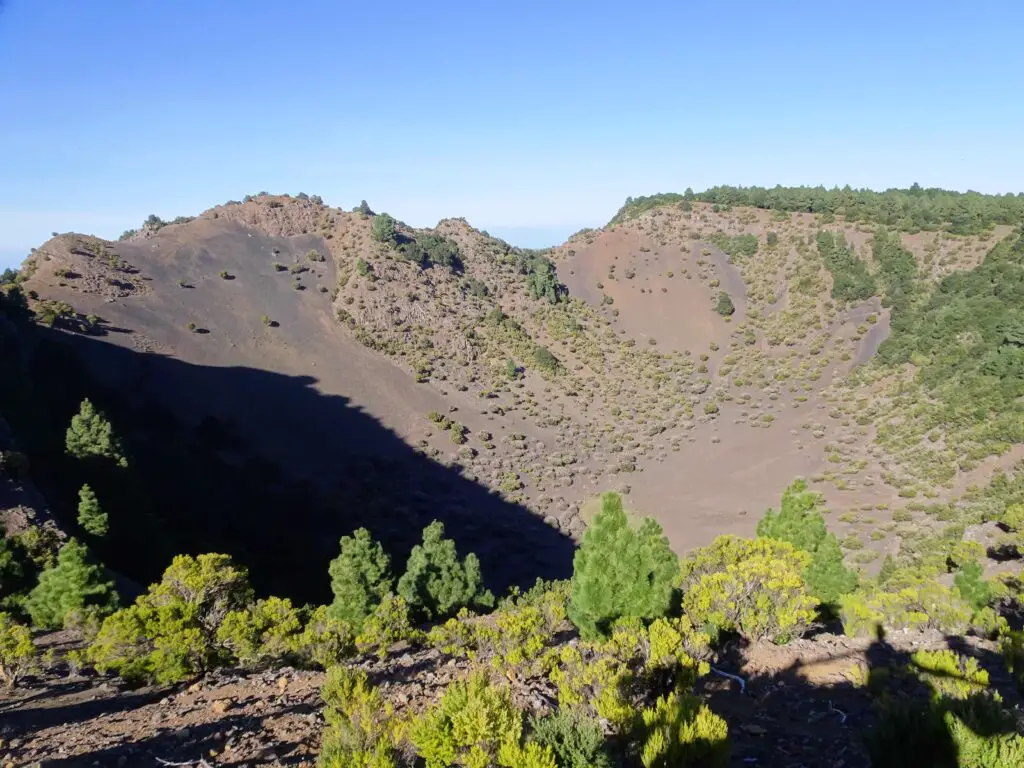
If you’re completely beat, this is where you could end your hike by turning right (south) to San Andrés, where you’ll find some restaurants, shops and a bus stop served by Bus 2 running between Valverde and El Pinar.
If you’re still feeling fit, you can continue east through the forest and past the abandoned village of La Albarrada. The collapsed stone buildings overgrown by prickly pear cacti are quite atmospheric. Keep following the farm roads before crossing the highway and descending into the tiny village of El Tiñor with a pretty little church and some nice, flowery front yards.
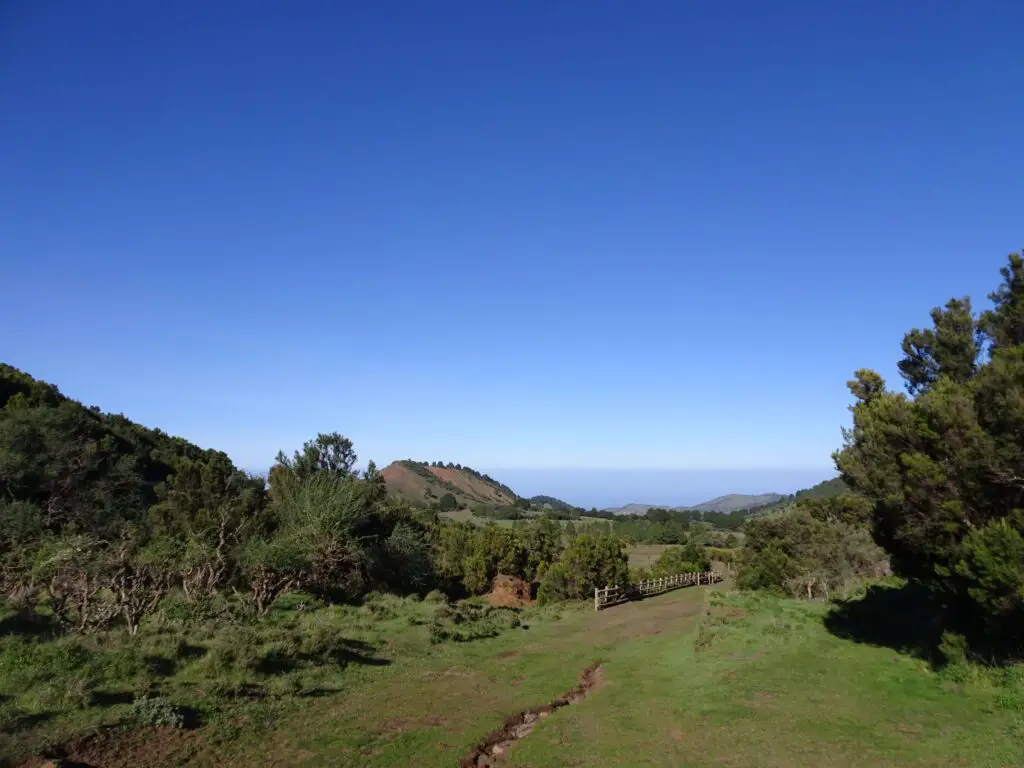
The last part of the trail runs close to the highway along small footpaths flanked by some enormous agave plants. After crossing the highway for a final time, you’ll descend a steep, rocky path. This will be a final test for your legs, which will probably be quite sore by now (at least that’s how we felt;-). Don’t worry, though, because five minutes later you’ll enter Valverde, your destination and the end of the Camino de la Virgen.
Continue to the small centre, where you can treat yourself to a nice dinner to celebrate the achievement of crossing almost the entire island by foot and seeing the best parts of El Hierro in an adventurous day.
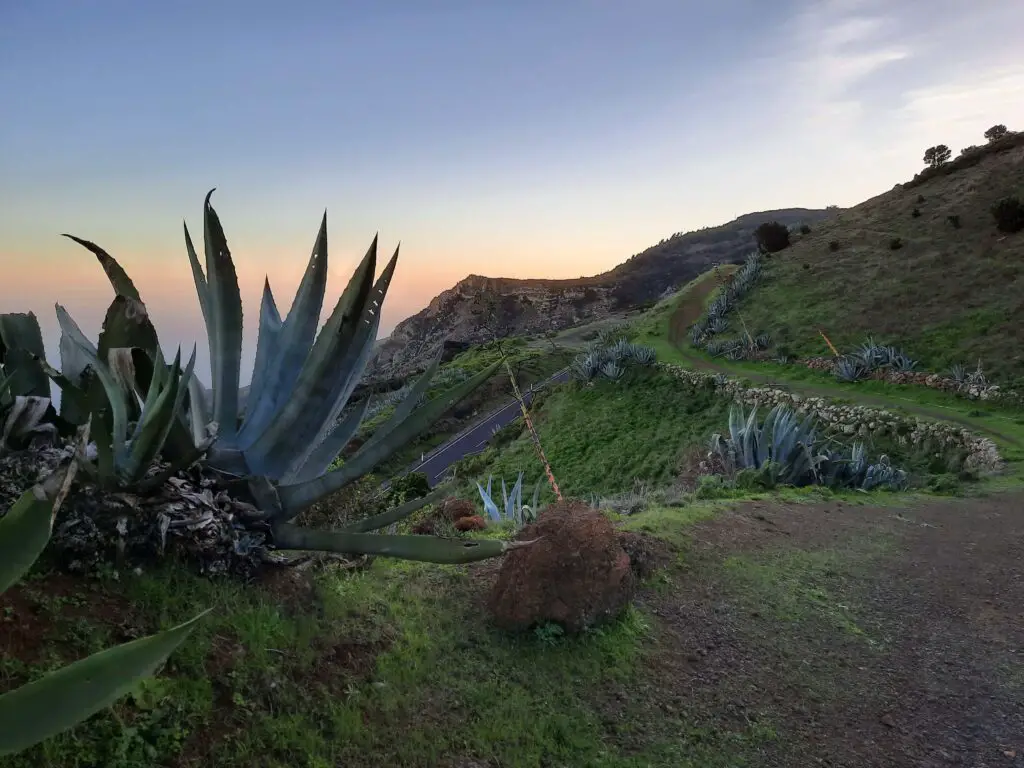
Map of the Camino de la Virgen
A map of the trail can be found online here. Note, that the Camino de la Virgen only runs from the Ermita de la Virgen to Valverde, while the map also includes other sections of the E131 long-distance trail running to both coasts.
What else to do on El Hierro
15 Unmissable Things to Do on El Hierro, the Canary Island’s Hidden Gem
The Ultimate Three Day Itinerary for El Hierro, Canary Islands
